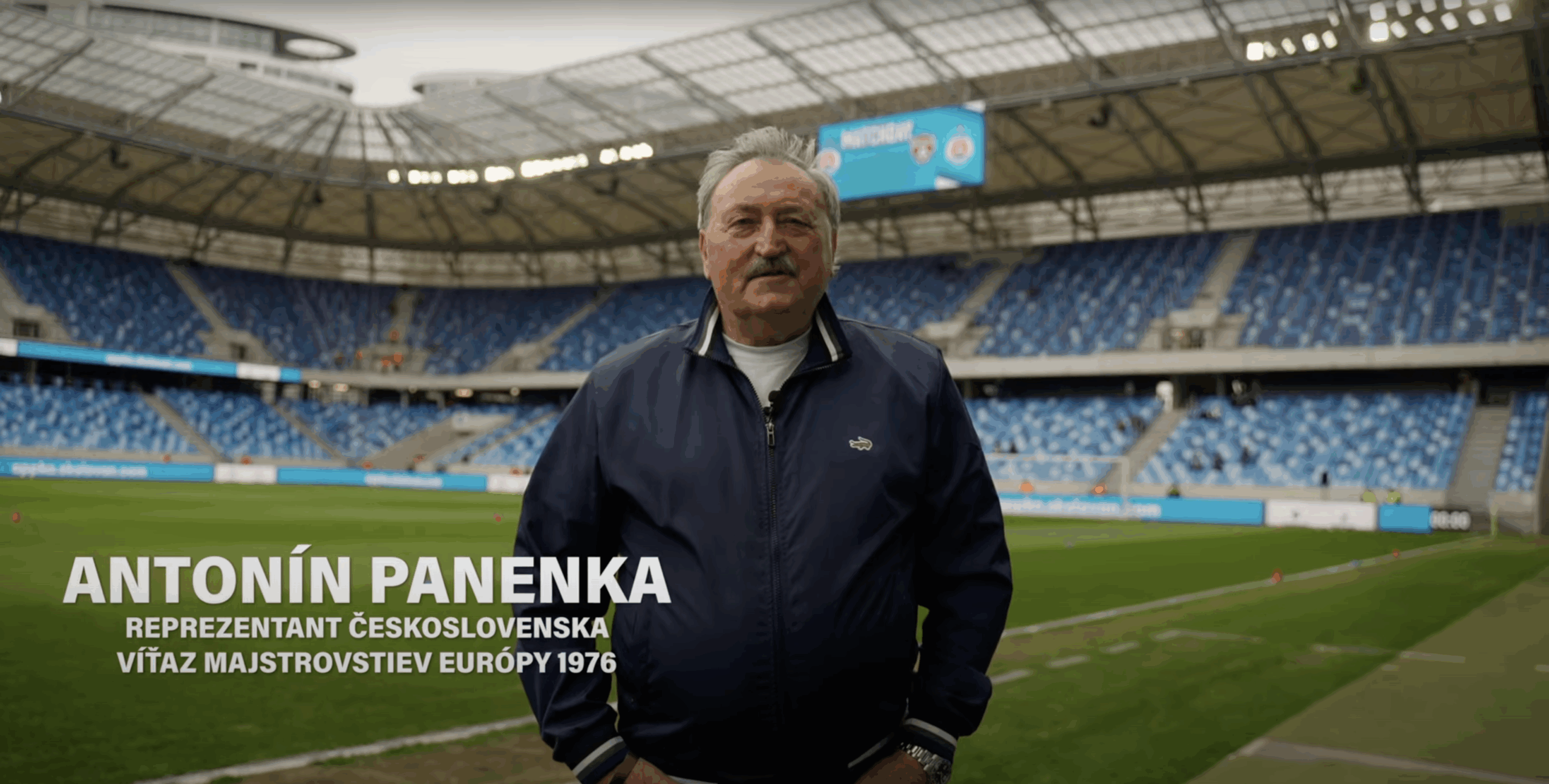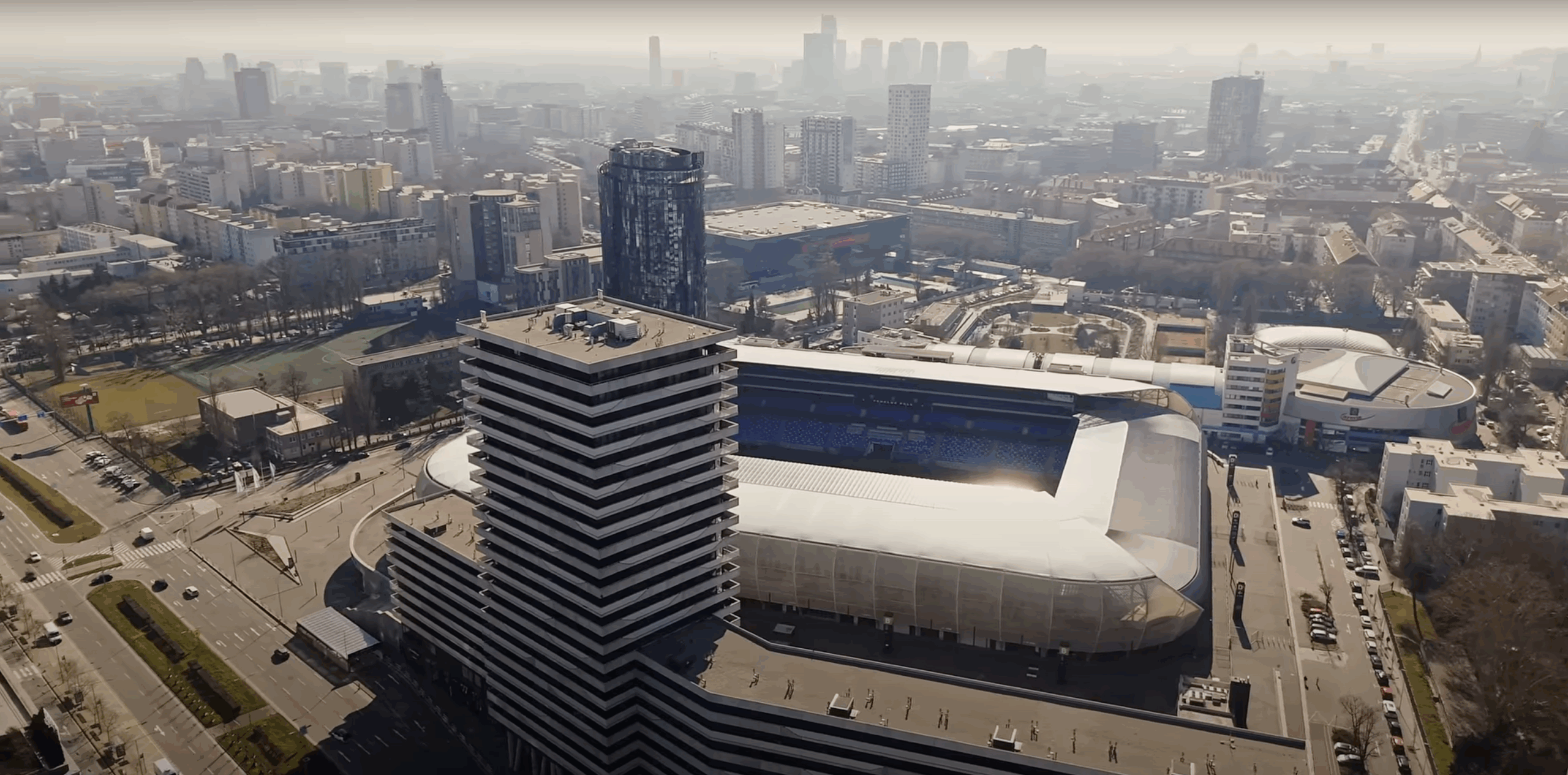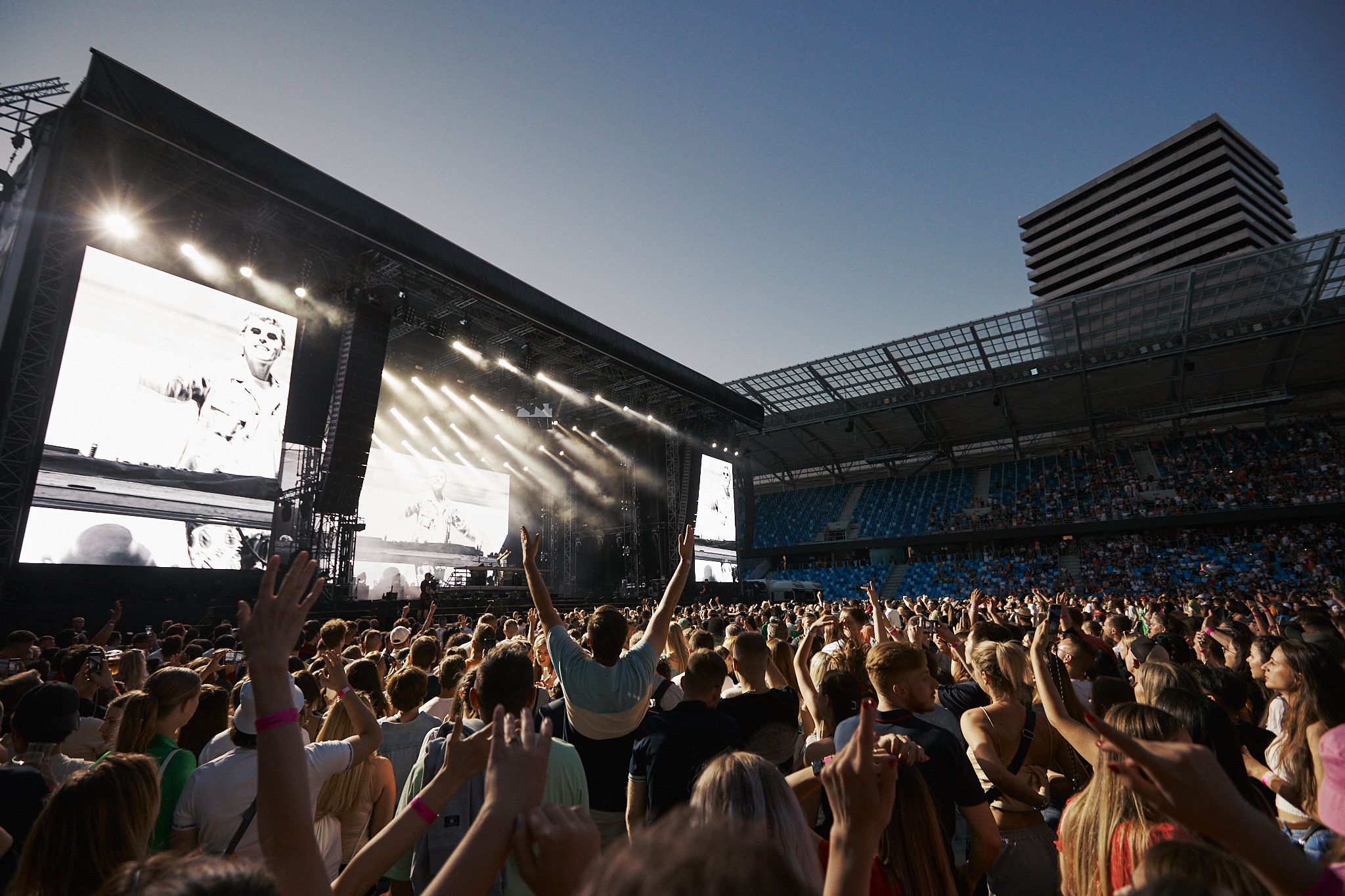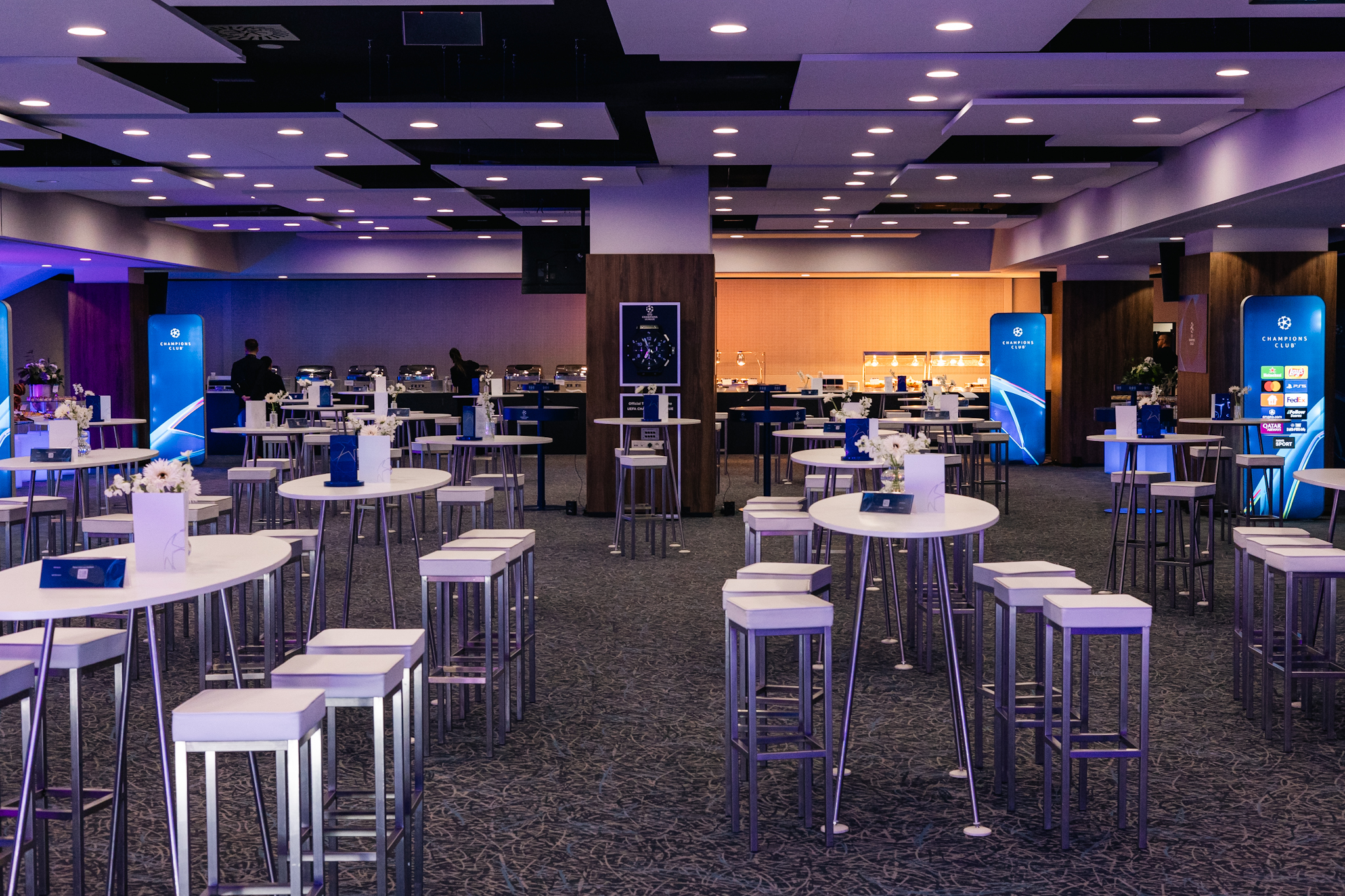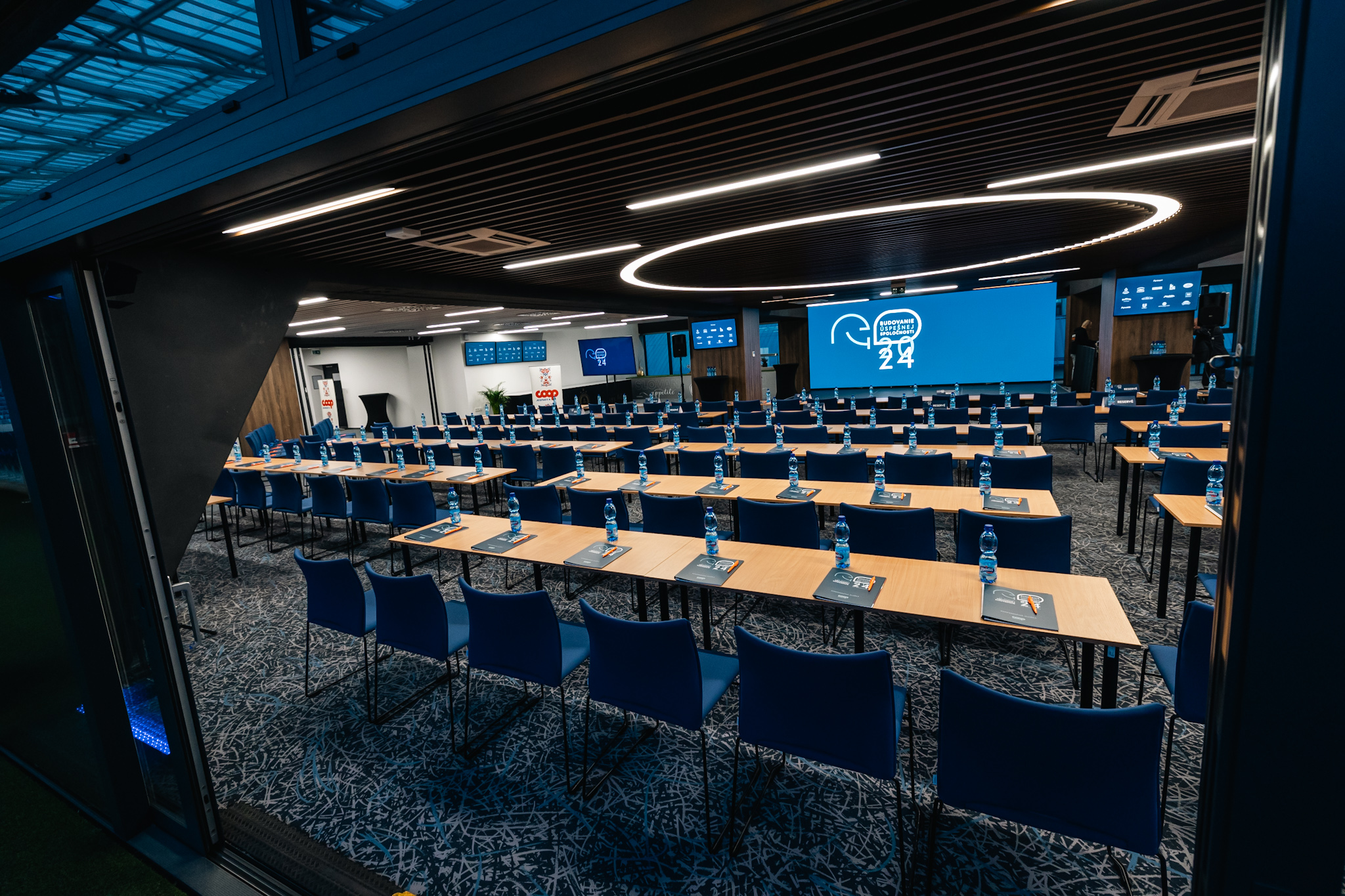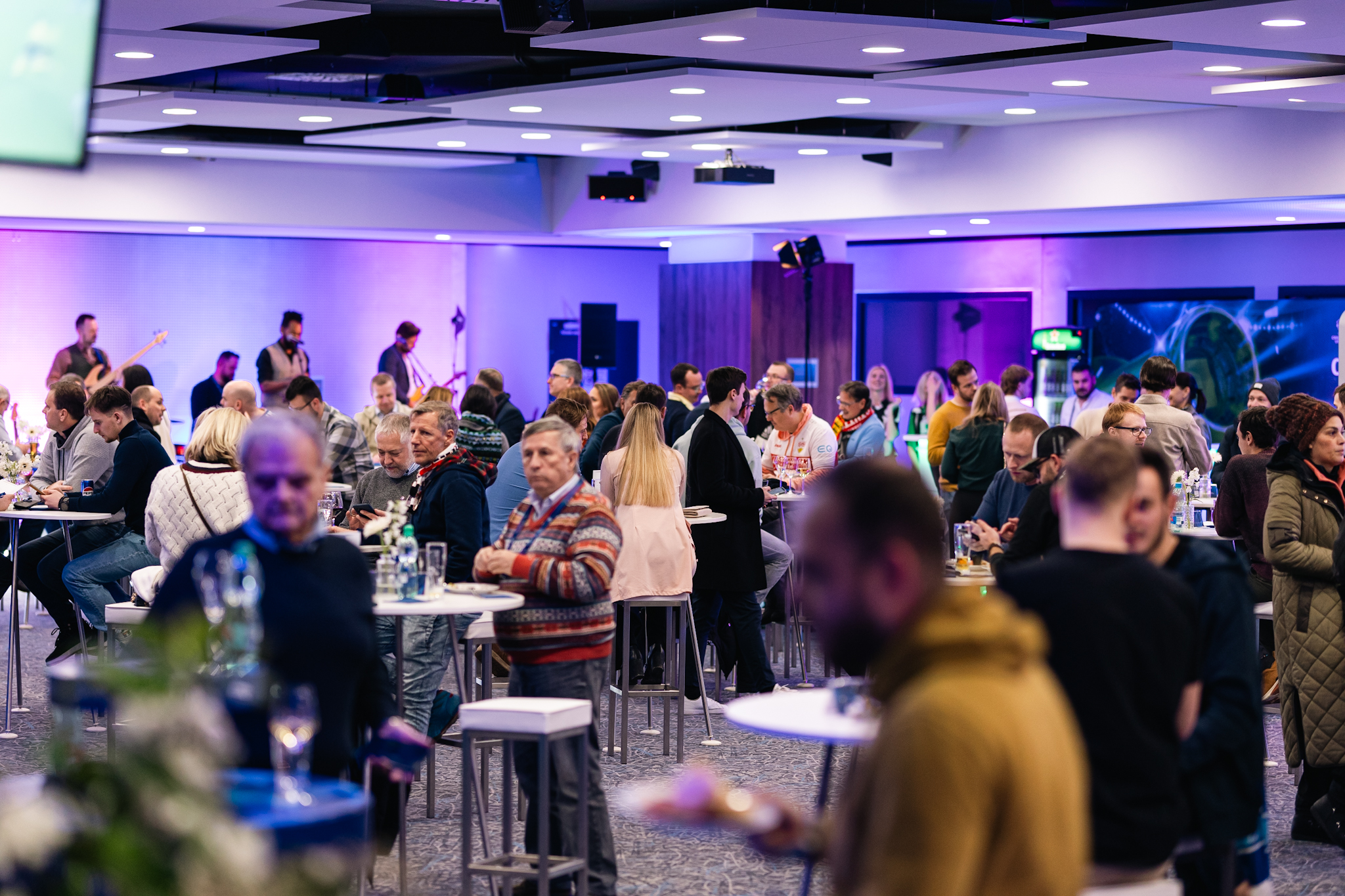In Slovakia we have a European unique – the National Football Stadium at Tehelne Pole is the greenest stadium in Europe. It is literally imbued with the most modern technologies and a great emphasis was also placed on ecology during its construction. Its design, multifunctionality and ecological focus make it one of the most remarkable buildings.
In practice, it looks like a water/water heat pump system is the basis. During the summer months, when the stadium is cooled, the waste heat is used to produce hot water. Rainwater is also harvested and used for flushing or watering the lawn.
In order to get the real ecological and economic maximum out of the stadium and its technologies, the company Slovenské elektrárne – energetické služby decided to go even further. Thanks to a recent innovation, it has become even greener than it was before. One of the measures they have decided to implement is a system from the Slovak startup Fuergy.
The stadium’s primary energy infrastructure was designed and managed by Slovenské elektrárne – energetické služby, a subsidiary of our largest energy producer. The aim was to offer the most sustainable solution with the lowest energy operating costs.
They use a combination of traditional green technologies and modern innovations. Thanks to them, up to 80% of the cooling and heating in the entire complex was produced using renewable energy sources last year.
Technology in the stadium has huge potential
One of the key green technologies in the stadium is heat pumps. The ones installed at the National Football Stadium are used for both heating and cooling the entire complex.
However, after an upgrade from a Slovak startup, they have been transformed from an ordinary appliance into a technology that helps stabilize the entire power grid and reduces CO2e emissions.
How it works:
The heat pumps have fully automated power increase or decrease according to preset temperature limits. Their output is regulated by a measurement and control system (MaR).
The clever Slovaks from Fuerga remotely connect their software to the existing MaR control system and regulate the performance of the technology according to the situation in the power grid.
Simply put: The system automatically increases or decreases the power of the pumps depending on whether there is a surplus or shortage of energy in the network. In this way, it capitalizes on the untapped potential of the heat pumps while helping to eliminate unwanted fluctuations in the power grid.
In addition to MaR, Fuergy can also connect to a slightly more sophisticated Energy Management System (EMS), which customers use to manage the overall energy consumption of their operation, or a frequency inverter connected directly to the energy-intensive technology.
“At the National Football Stadium we connected to the MaR system regulating the heat pumps. Our brAIn flexibility solution becomes additional software that sends commands to the higher-level MaR system to increase or decrease the output. MaR then decides whether or not to enable the command. Battery storage and increasing the energy efficiency of existing technologies can significantly accelerate the development of renewables and at the same time improve the energy mix in a way that is felt by every single customer,” explains Vladimír Miškovský, CBO of FUERGY.
“The MaR system has its preset upper and lower limits on pump performance, which do not allow the FUERGY system to exceed the permitted performance and in no way restrict the supply of heat and cooling. In this way, we are only within the permitted range of pump power,” adds Andrea Pancotti, Sales and Energy Services Manager at Slovenské elektrárne – energetické služby.
“Implementing such advanced technologies not only allows us to optimise costs and improve service for our customers, but also to respond to global challenges such as climate change and the growing need for sustainable energy,” adds Pancotti.
Deployment of the system usually takes a few days and the results are visible almost immediately. Thanks to brAIn’s flexibility service, the national football stadium is able to protect not only nature but also its energy costs.
The system uses advanced artificial intelligence
Slovak startup Fuergy is in its sixth year on the market. The company has developed software that automates the production and consumption of electricity by customers based on historical data of the client, the evolution of the price of electricity on the market and prediction models. It also uses artificial intelligence to help it do this.
Flexibility brAIn is a software solution that regulates energy-intensive technologies and energy sources.
The system uses advanced artificial intelligence algorithms to predict energy consumption and production, allowing it to dynamically adjust operations and achieve maximum savings.
For companies that operate technologies with an input or output of more than 200 kilowatts, it can effectively optimize electricity costs without the need to invest in expensive equipment.
What all controls the Slovak system:
-heat pumps,
-fish,
-storage tanks and tanks,
-cooling and heating systems,
-compressors,
-energy sources,
-charging stations for electric vehicles.
A 7-tonne structure that changes lives
In addition to the aforementioned system, Slovenské elektrárne decided to invest in another solution from a Slovak startup – the smart battery storage brAIn. This is an extension to the brAIn flexibility system, which works on a similar principle.
Neither solution is designed to reduce electricity consumption per se. While brAIn’s flexibility effectively regulates power consumption and generation in real time, storage seeks to shift it over time as needed by the customer and the entire grid.
One of the main tasks of battery storage is also to guard against exceeding the reserved capacity, i.e. the contracted electricity consumption, for example during matches and events. The stadium then draws power from the storage and avoids incurring penalties for exceeding the reserved capacity.
The battery storage capacity for the National Football Stadium is 432 kilowatt hours and the entire structure is over 7 tonnes. Therefore, it was also necessary to solve the problem of the insufficient load-bearing capacity of the floor, which did not allow for the placement of a several-tonne device. To strengthen it, Slovenské elektrárne therefore had a metal structure manufactured and placed under the existing floor.
In addition, special cooling is installed in the back of the storage. This is because the storage must be operated at a temperature between 20 and 35 degrees Celsius, otherwise its performance is reduced.
What the National Football Stadium has gained thanks to the systems:
-in half a year with the brAIn flexibility system saved 9.82 tonnes of CO2e,
-has saved 61.34 tonnes of CO2e in three months with the storage,
-reduced emissions by 29% overall.
An invaluable ecological benefit
In addition to optimising energy costs, these solutions also significantly reduce CO2e emissions. According to the results and data from the Fuergy software, the National Football Stadium building can save approximately 265 tonnes of CO2e per year.
What is CO2e?
CO2e is a more accurate label for all greenhouse gases that trap heat and cause global warming. Simply put, CO2e collects all the gases in one place.
Carbon dioxide (CO2) is just one of several greenhouse gases with the potential to contribute to global warming. CO2e includes all molecules that trap heat and warm our atmosphere, not just carbon dioxide.
How to avoid greenwashing and bet on measures that actually reduce your carbon footprint
The European Union should achieve carbon neutrality by 2050, according to the European Green Deal. Part of this commitment, which Slovakia has also signed up to, includes measures to minimise the carbon footprint of new and existing buildings.
Environmental measures will also play an increasingly important role in every company’s activities. However, it will be even more important to choose measures that actually reduce the carbon footprint. Because not everything that pretends to be green has a real environmental benefit.
For example, a company promotes one positive feature of a product (e.g. recyclability) without taking into account other environmental factors such as emissions during production or the need for long-term maintenance.
Or projects are labelled carbon neutral on the basis of offsetting measures, such as tree planting, without actually reducing their own carbon footprint. However, when calculating the amount of CO2 absorbed, they count adult trees, not young saplings.
In contrast to these greenwashing measures, Fuerga’s solution actually reduces CO2e emissions by preventing them from occurring by replacing fossil energy sources. In other words, when battery storage supplies electricity to the grid instead of firing up a diesel generator, it displaces a non-negligible amount of CO2e emissions.
There are several examples of greenwashing:
Carbon footprint of companies in relation to employee commuting
The company declares that it promotes sustainable mobility for its employees, for example by encouraging them to use public transport, cycling or walking, but does not offer them real conditions or incentives to do so.
Recycling waste within the company building without controlling what happens to the waste afterwards
This can lead to a situation where waste ends up in landfills or is incinerated without energy recovery, which has a negative impact on the environment, despite the company’s claims of its commitment to recycling and sustainability.
According to Fuerga, both of these cases show how companies can use greenwashing to create a positive image for their environmental efforts that actually have no real positive impact on the environment.
“These activities may be accompanied by large advertising campaigns that exaggerate the real impact of these initiatives on reducing carbon footprint, while the company does not make any fundamental changes to its activities or policies that would actually support a sustainable way of operating,” explains Vladimir Miskovsky of Fuerga.
It is therefore important that consumers and stakeholders are critical and demand transparency and verifiable evidence of companies’ environmental claims. They will be encouraged to do so in the future by the new EU Directive of January 2024 banning greenwashing practices.
Consumers and investors should learn to recognise these practices and seek verifiable and transparent information on the sustainability of buildings and construction projects or company activities.
Carbon neutrality will affect both construction and building operations
There is only one carbon-neutral building in Slovakia that is among the top 1% of the greenest buildings in the world. Carbon neutral buildings are designed and built to minimise their carbon footprint, which means they produce the same amount of carbon as they absorb or neutralise.
This concept is achieved through a combination of different measures, including the use of renewable energy sources, efficient waste management, high-efficiency insulation materials and integrated emission reduction technologies.
Carbon neutrality is a key aspect of the ESG (Environmental, Social, Governance) principles that set modern standards for socially responsible business.
ESG reporting provides a clearer understanding of the impact a business has on the environment and wider society. This information is often key in investment, purchasing and partnership decisions and helps to support sustainable growth and development of the company.
It is the installation of the brAIn flexibility system, together with battery storage from Fuergy, that can continue to make a significant contribution to expanding the range of carbon-neutral buildings and meeting increasingly stringent green standards in the future.
Author: Andrea Jánošíková
Full version of the article:
https://fontech.startitup.sk/europsky-unikat-futbalovy-stadion-v-bratislave-ukazal-eko-inovaciu-stoji-za-nou-slovensky-startup/


